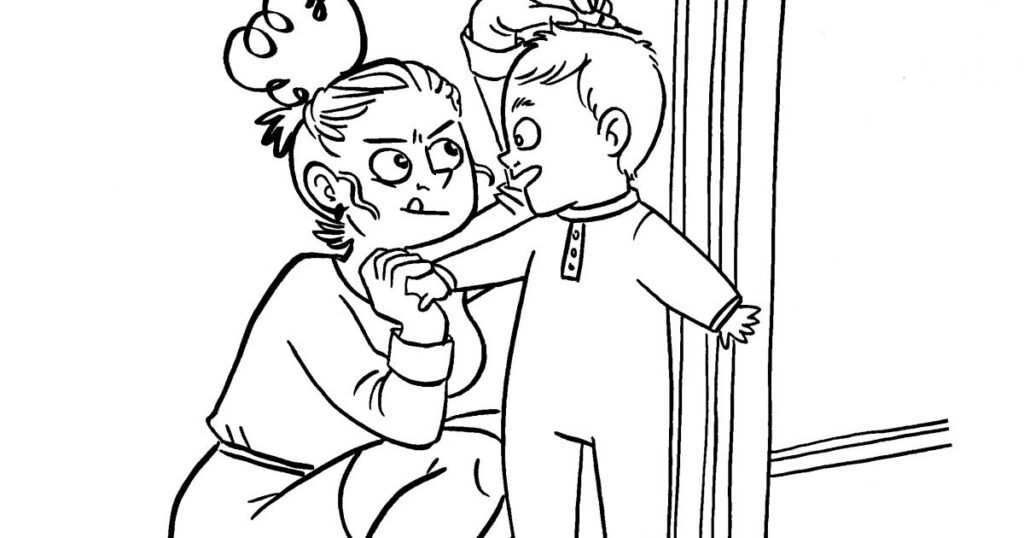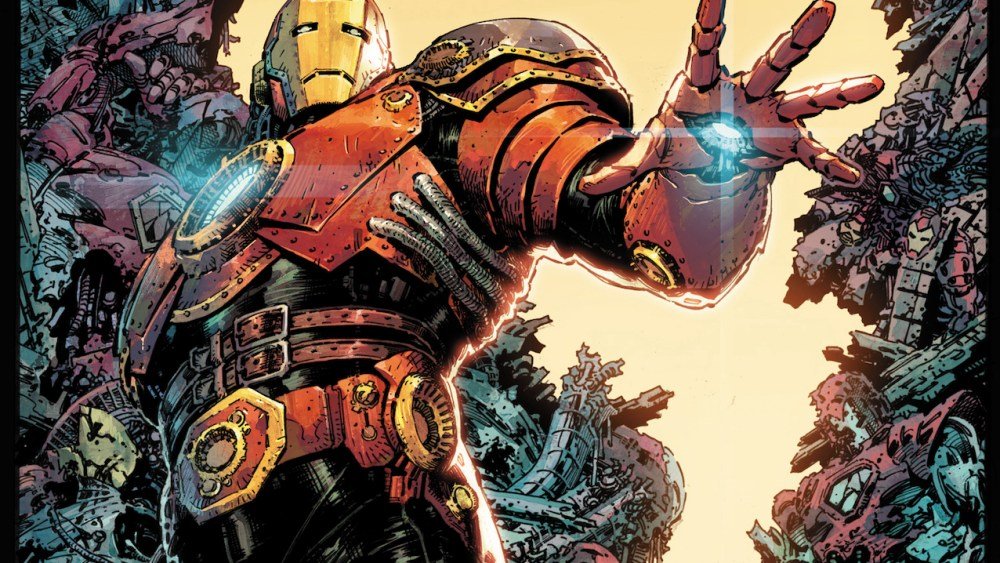Immigrants in a foreign land, John Constantine, Hellblazer: Dead in America #8 finds Constantine and Dr. Diablo traversing the River Styx aboard a vessel helmed by Hell’s very own Vanilla Ice: Etrigan. When their pilgrimage to reunite Garner’s memories with his body leads to a chance encounter with an imprisoned ally, the duo will have to make a choice. Will they make the sacrifice necessary to save their friend and potentially the world? Or will they all be confined to a prison of their own making?
“Hell’s whatever you expect.”

DC Comics
Beautifully written in both prose and pentameter, after reading this issue it’s clear Si is no amateur. Spurrier’s dialogue is spot-on and hilariously written, with this issue I find myself completely smitten. His analysis of Liberty’s New Colossus is fresh and intriguing, and with his interpretation of Hell there can be no critiquing. Estherren’s artwork perfectly captures the blood and the gore, his panels are never a bore. Delpeche’s colors give the issue a sense of despair, a perfect mood to represent Hell’s flair. My only wish after reading a book so sublime is that I could stop making sentences rhyme.
Okay, now that I think I’ve gotten that out of my system, let’s dive headfirst into John Constantine, Hellblazer: Dead in America #8. Beginning with a quote from The New Colossus, written on the Statue of Liberty, Simon Spurrier begins to draw comparisons between that of the United States of America and Hell. Although this may sound extreme, this comparison does not feel out of place as Spurrier has examined America and its blemishes throughout prior entries.
In this opening sequence, Etrigan states that the sentiments of the poem are insincere. It’s the first of many jabs that land square on the nation’s proverbial chin as one of the hot-button issues facing the country is illegal immigration and deportation. The rhyming demon claims that the greeting on the entrance to Hell, “All ye who enter, abandon hope,” is more sincere than the one on Lady Liberty. This is because there is equality in Hell’s welcome, something that America’s lacks.
After encountering Swamp thing in depths of Hell, Constantine reunites Dr. Diablo’s memories with his body. As a result, the titular Hellblazer must work quickly to learn the location of Dream’s missing sand before the denizens of Hell descend upon them. Upon sacrificing the villain’s soul in exchange for Swamp Thing’s freedom, Constantine discovers that he has completely messed up. In this sequence, Spurrier expertly continues the comparison between America and Hell as the demons take the form of stockbrokers evaluating the worth of Dr. Diablo’s soul and his punishment. This is a insanely interesting interpretation of Hell, as the demons vie for different forms of the villain’s punishment.
“We call it the Land of the Free but – nothing’s free. Try to give something away – even love, for pity’s sake – and everyone loses their f*cking minds.”

DC Comics
Constantine continues to draw this comparison after discovering that he has been trapped in Hell after ruining Dream’s trap. The Hellblazer transforms the hellscape into a more depraved iteration of America. Constantine states, “We call it the Land of the Free but – nothing’s free. Try to give something away – even love, for pity’s sake – and everyone loses their f*cking minds.” There is more to his diatribe, however, Spurrier’s words raise a mirror in which America is forced to examine itself.
Thankfully, John Constantine, Hellblazer: Dead in America #8 is not completely negative as Spurrier expertly balances the dark examination of America with humorous dialogue and character interactions. Between the abuse of the correct pronunciation of Constantine (it rhymes with malign) and the way the titular Hellblazer abuses Etrigan’s rhymes, I found myself smiling throughout the entire issue. This humor provided a much-needed levity for such a dire examination of the country. Spurrier’s writing is so effective that I find myself clamoring for a series starring these two characters.
Bolstering the Spurrier’s narrative, Estherren’s artwork perfectly captures the blood and the gore demanded by Constantine’s trip into Hell. Although it doesn’t provide the level of detail present in Aaron Campbell’s work, Estherren’s art does an excellent job of conveying the horrors of Hell and the torture Dr. Diablo endures. Additionally, Delpeche’s colors capture Hell’s ethereal nature and sense of despair.
Beautifully written in both prose and pentameter, John Constantine, Hellblazer: Dead in America #8 draws a haunting comparison between America and Hell. Spurrier’s dialogue is spot-on and hilariously written. I love Constantine’s disdain and abuse of Etrigan’s rhyming throughout the issue. Additionally, Estherren’s artwork perfectly captures the blood and the gore demanded by Constantine’s trip into hell. This artwork is bolstered by Delpeche’s colors as they capture Hell’s ethereal nature and sense of despair.



